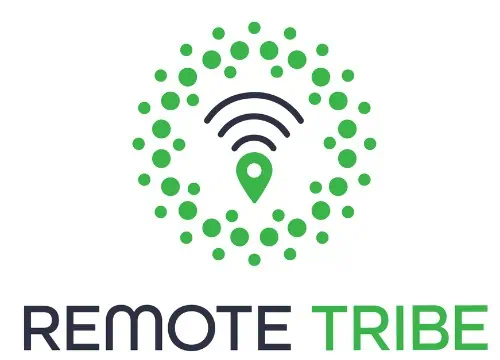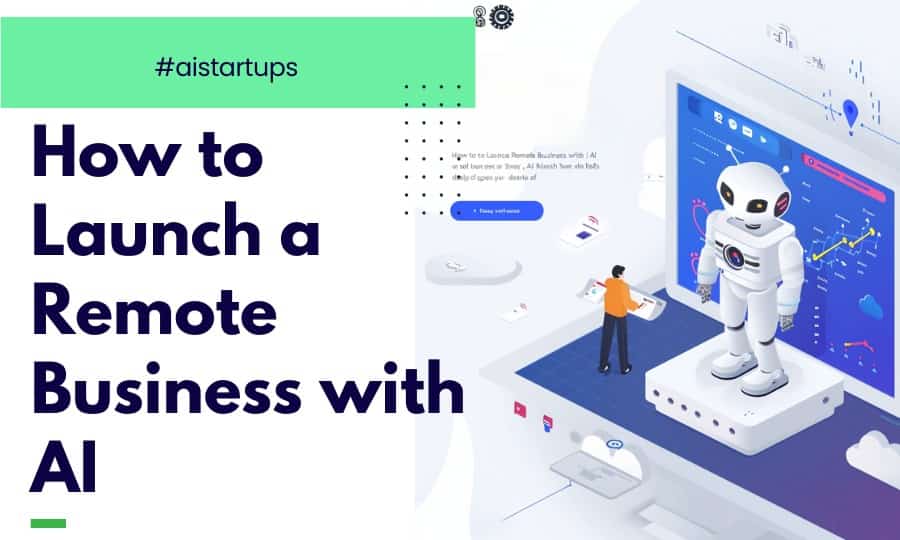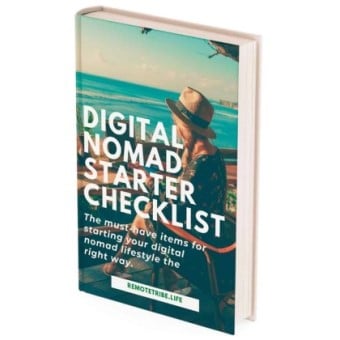My wife and I used brand new (at the time) technology to start our first remote business in 2009, and we’ve never looked back. Now, with the rise of AI, the same 5 steps we used to move fast and build a remote business “backwards” are even more relevant today.
I remember it like it was yesterday. Sitting up late, drinking cheap beer and eating cheaper pizza in our Buenos Aires apartment, wondering how we were going to make it.

My wife’s job, teaching English as a second language, accounted for half our income – but with the holidays arriving, her students would soon be taking a long break, and she wouldn’t be getting paid for a few months.
As we sat and talked an idea came to us. For the last year we’d been using Skype to chat with our families back home… Would people pay for English classes online via Skype? At the time, no one offered online English classes; Skype’s technology was just too new. But with our skills and this brand new tool, it seemed like a slam dunk.
That night we bought a domain name and hosting, put together a simple website offering English classes, and posted links on Craigslist around the world.
It seemed too easy, but within days my wife had her first students, and by the new year she had a full teaching schedule that paid better than her previous job had.
As we sat and talked an idea came to us. For the last year we’d been using Skype to chat with our families back home… Would people pay for English classes online via Skype? At the time, no one offered online English classes; Skype’s technology was just too new. But with our skills and this brand new tool, it seemed like a slam dunk.
That night we bought a domain name and hosting, put together a simple website offering English classes, and posted links on Craigslist around the world.
It seemed too easy, but within days my wife had her first students, and by the new year she had a full teaching schedule that paid better than her previous job had.
Our friends were shocked and a little skeptical. We’d become business owners literally overnight! Was that even legal? A couple friends who had business degrees asked about business plans, marketing plans, articles of incorporation… We ignored it.
We were having fun solving day-to-day problems like how and when to bill clients, what to charge, how to schedule students, how to track the number of classes they’d taken, and what they’d studied. It was one of the most exciting times in our lives.
After nine months I was working full-time on the business, and we brought on two more English teachers. We also slowly made our business legitimate – we got an EIN from the IRS, incorporated, and became a “real” business.
When I look back on this, I feel like we stumbled onto a better way for starting a simple small business while traveling abroad. And with AI, the process is even simpler. Here are the steps I recommend to launching a remote business fast.
Step 1. See how new technology can solve a real-life need
Right now all anyone is talking about is AI.
According to a poll by BPC and Morning Consult, 58% of small business owners plan to invest in AI in the next year, and that doesn’t take into consideration the number of consumers who are interested in using AI as well.
So if I were looking for a remote business to start right now, AI consulting would be my first pick.
Whether you’re an AI expert or a regular, everyday person using AI within your own field, think about how you could turn that into a consulting or freelance business – I guarantee there are people who are less-experienced than you, who would pay for your AI knowledge, or pay for you to do the work for them.

And no, you’re not too late. Just like any other new technology, there are still huge gaps in AI adoption rate.
Ask yourself – how do you use AI right now? Can you learn more about AI than your clients can, and make it worthwhile for them to hire you instead of doing it themselves?
You don’t have to use AI, you can pick any technology that makes your life easier or that you’re familiar with. Just make sure that it solves a real-life need for other people, as well as for yourself. Once you have that idea, it’s time to get creative.
Step 2. Come up with a business name that says it all
The very best business names (for new, small businesses at least) will spell out exactly what problem they solve in 3-4 words.
Your goal is to think up a name for your business that leaves nothing to chance. Better yet, think up an entire list of potential business names and pick the best one.
Here are a few general rules:
- Shorter names are easier for clients to remember than longer names
- Using alliteration and rhyming can also make your name more memorable – CreditCoach for example.
- Include the top word or phrase related to your business
- Make sure the exact business name is available as a domain (preferably a “.com”)
- If it’s not, try adding short words to beginning or end, like “MyCreditCoach” or “CreditCoachAI”
Bonus points if you can grab the same name on all the social platforms, too.
Do a quick search in Google, and on your favorite social networks before you settle on your business name, just to make sure no one else is already building a business with your name. If you don’t see anything, you’re probably in the clear.
Namy.ai is also a great option for anyone stuck on this step – it will generate unlimited ideas based around your business concept and millions of existing websites, and it’s free to use to come up with ideas. It’ll also show you which domains are available, and which are taken.
Don’t buy the domain yet though. You can always get a domain for free with your website, which you’re going to need if you want to look professional.
Step 3. Create a website (but do it fast)
Most business ideas only get this far before dying a slow, agonizing death. Don’t let yours be one of those!
There are a ton of website builders out there, some offering thousands of templates, hundreds of plugins, landing pages, customer management systems, and more.
But these services aren’t the solution – they’re part of the problem. You don’t need thousands of options, and you definitely don’t want to spend a ton of time working on a website (unless you’re a website designer and that’s part of your resume). You just need the simplest, quickest website possible that still looks professional.
When I built the website for our online English classes, I knew that everything depended on me creating a website fast. I had two simple goals:
1. Put up our information
- Make it easy to sign up or get in touch
The same urgency should apply for any remote business where time is of the essence.
In fact, if you’re spending more than 30 minutes on ANY of these steps, it’s a clear sign that you need to wrap it up and move on. Remember, your goal is not to have an amazing website, the best business name, or even the best business idea.
Your goal is to launch a remote business quickly. If you’re not sure where to start, an AI website builder like Zarla will generate a complete website in seconds – including images, text, layout, a logo, and colors.

This means you don’t have to know anything about website building, design, copywriting, or even domains and hosting. Zarla can do it for you, and you’ll still look professional online.
Step 4. Make people an offer they can’t refuse
This is the most important step, and as simple as it sounds, it might end up being the hardest because it requires 100% confidence in yourself and follow-through.
Tell people what you do, and what you charge. And be specific about it!
You won’t know if there’s an audience for your services until you put a solid offer out there and see whether or not it gets accepted.
Go where your target market is (facebook groups, subreddits, coffee shops, gyms, you name it) and be a part of the conversation. If you’re interacting with real people, online or off, there’s no need to spend money on ads. Just make your offer.

Adjust your price or the services you’re offering until you have an actual customer – even better, give a limited-time discount to friends & family in order to prove what you can do to people who are willing to support you right from the get-go.
This is a great way to see how your business idea works in a real-world setting. Were you able to solve your customer’s problems? Was the price you set (the full price, not the discounted price) worth the effort it took to accomplish the task?
Your answers to those questions will either convince you that you want to keep going with this business, or let you know that this idea isn’t going to work.
Step 5. Get feedback from your first customers
Don’t ask for feedback face-to-face… you want honesty. Send a text or an email, so that your customers will feel a bit more comfortable giving you real insight into what you can do better, or what other problems they still need solved.
Of course, there’s another reason to get feedback as well. One of the best ways to grow your brand new business is to gather convincing reviews from satisfied customers and use those in your own marketing materials and website.So when you already know a customer is happy with your work, include a link to a place where they can leave a public review.
Both Facebook and Google are good options for this, and both are free. Choose the one that makes the most sense for you or your customers.
If you’re using Google, you’ll need to set up a Google Business Profile first. Your customers will then be able to leave a star rating and a written review, which will help your business show up when people search for the services you’re offering..

This works for remote businesses too. Just set up your profile with a service area that matches the region you want to reach. Include your phone number or email, and images (if possible) to make your profile stand out.
Typically, it takes at least 5-10 reviews before your business will show up near the top in searches, so it’s important to ask for feedback every single time you have a happy customer.
Always give them a heads-up that you’ll be asking for a rating. Just by talking with a customer beforehand and letting them know that you’d like their feedback, you’re creating a social expectation for them to follow through, so your odds of getting a good review go way up.
It’s equally important to send a text within minutes of having that conversation. Don’t let them forget that you’ve just asked them to review you.
In the text, include the name of your business and a short message asking for their feedback. Include a link to your Google Business Profile ratings page as well – you can find it here once you’ve created your profile.
What’s next?
Congrats – you’ve got a business! Now, try to get more customers! (That’s probably easier said than done, but if you’re in a popular niche like AI, you’ve got an advantage.) Don’t hesitate to update your services or prices when it makes sense, too.
Ultimately, all it takes to start a business is an idea, a business name, a simple website, an offer, and real customers.
And there’s absolutely no need to spend more than a few bucks up front to make it happen.
Once you have money coming in, THEN I recommend doing all the other stuff that nobody really wants to do. Create an LLC and get an EIN from the IRS. Set up a business bank account and start putting aside a percentage of earnings for taxes. Talk to a business mentor at SCORE.org and learn how to do it right.
But don’t let your business idea get bogged down by those kinds of business details when you’re just starting out. When you’re inspired to start a remote business, go for it! Take the shortest route possible to get your first customer, and the rest will fall into place much more easily.









